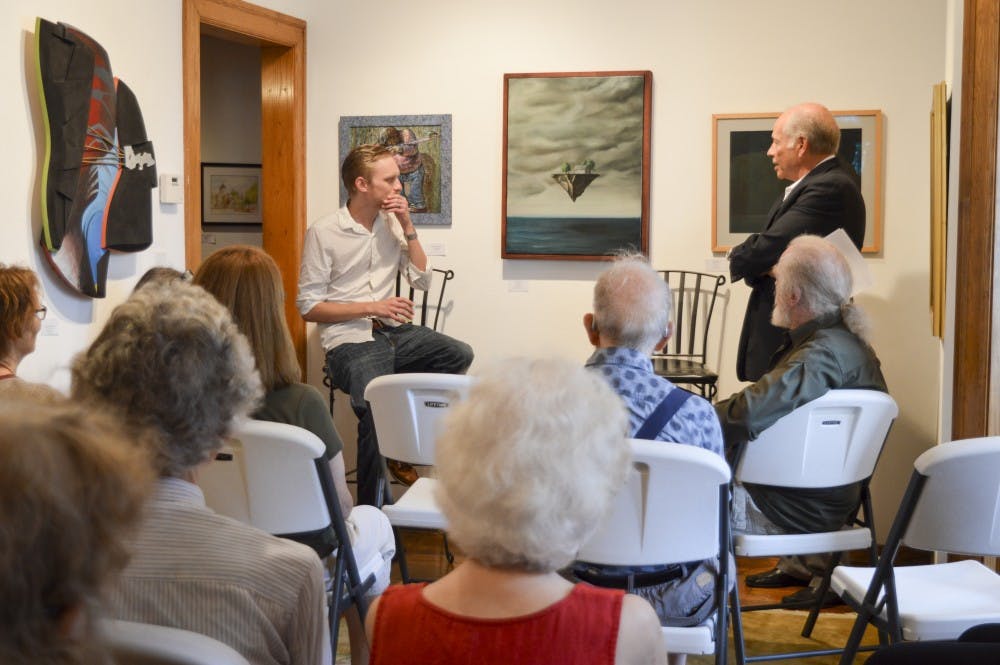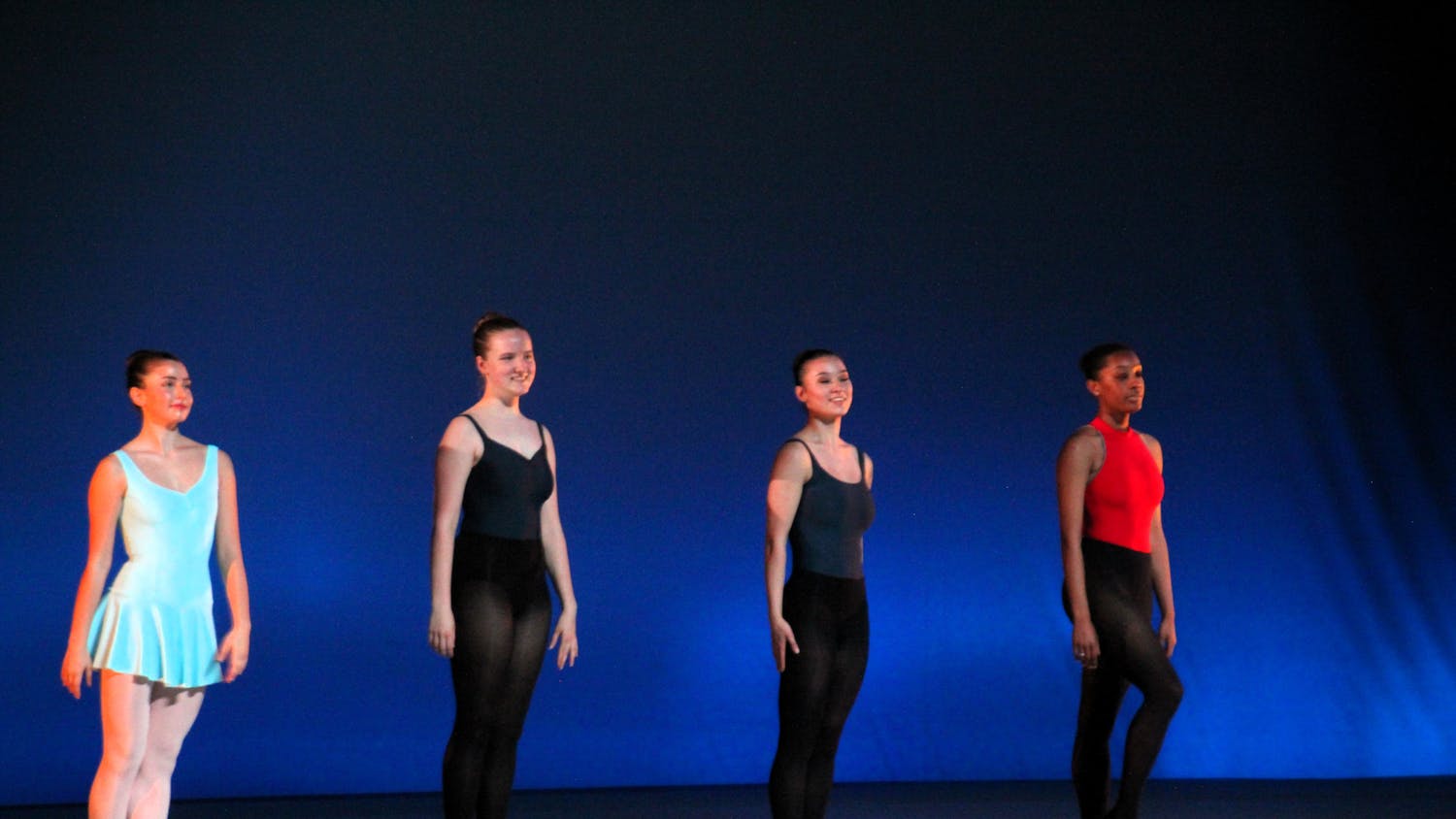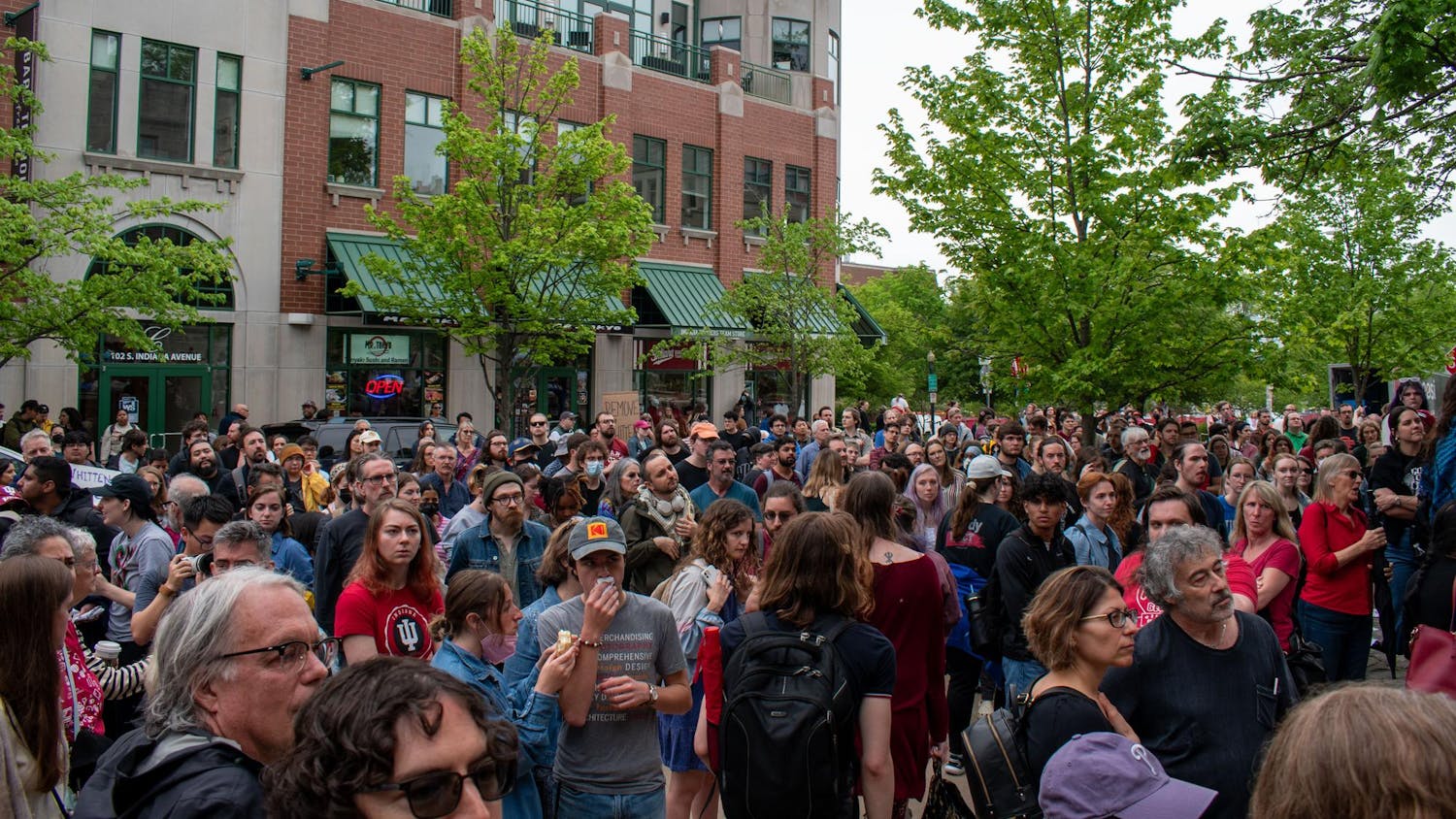The Venue Fine Art and Gifts’ Ekphrasis event Saturday began with a meditation on the day’s theme from curator Dave Colman. Ekphrastic poetry refers to poetry written with a visual art piece as inspiration. The purpose of the event was to introduce the poet-painter pairs whose work is on display as part of Ekphrasis, and give each artist the opportunity to talk about their respective works.
Colman joked to the room of Bloomington community members about the many pronunciations of the word before introducing some of the artists and poets who participated in the exhibition.
“It has been a treat to be involved in this the first year and again the second year,” Colman said. “It’s been a treat to deal with the artists and poets we’ve been able to attract to the event.”
Colman went on to describe the meaningful connection that exists between art, painting, music and poetry of any given period, which he said he first explored in a freshman comparative literature class.
Poets were in charge of choosing their paired painting for Ekphrasis, a process that involved walking through a room filled with the paintings and examining each piece before claiming one as their inspiration.
One of the artists displaying was Ray Perigo, whose surrealist painting depicted a house on a piece of land suspended over a body of water. He said the painting was based on the idea of trying to reclaim youth and go back to a simpler time.
“It’s a natural thing people want to do, the core of the midlife crisis,” Perigo said. “You want to get some of that back, and you can’t, and you just end up looking silly.”
The poet who ended up choosing to write a piece based on this painting was Jenny Kander. Kander wrote her poem in more than one form. One was a in free-verse style, not shaped as anything specific, and the other was a concrete poem, in which the poem looked like the image of the floating island seen in the painting.
“I must admit, when I got home, I thought ‘I must be nuts,’” Kander said. “The prompt for this artwork came from the subject’s unlikelihood — surrealism seems always to pose a question or questions, so I took my cue from there, steeped myself in the painting’s silence, the depiction of desertion, immobility, and I couldn’t resist writing in addition to my original free-verse form a more concrete version.”
One painting by Mark Blaney depicted a lone truck and a man in the midst of darkness, which poet Shana Ritter used as inspiration for her piece on being a diner waitress.
“I didn’t really want to choose it, but I couldn’t help it — I kept getting pulled back to it and pulled back to it and I just couldn’t stop,” Ritter said.
Ritter said the choice was complex, but the certain aspects of the painting made her sure she had to choose it.
“I couldn’t figure out what it was that drew me, obviously it’s the light,” Ritter said. “There is a trucker there in the light and gas pumps, and you keep seeing the outline of the trees and the stars. It keeps revealing itself.”
The event highlighted the different interpretations and ideas art can evoke in the viewer, which Julia Karr explored in her examination of a piece by James Campbell called “Finding Florence.” She spoke of an interview she read with Campbell about this piece and her existing familiarity with Italy through her reading of Dante’s “Inferno.”
“After reading what you said in your interview, knowing what I was reading about Florence and knowing how I felt when I first saw this, the thing that came to me was just exactly how subjective art is to everyone,” Karr said. “Everybody looking at that is going to think their own thoughts about this no matter what we write, or say, or do, or paint.”
For those who missed out on the first night’s event, another Ekphrasis artist and poet presentation is scheduled at 6 p.m. on Saturday, Aug. 27 at The Venue.




